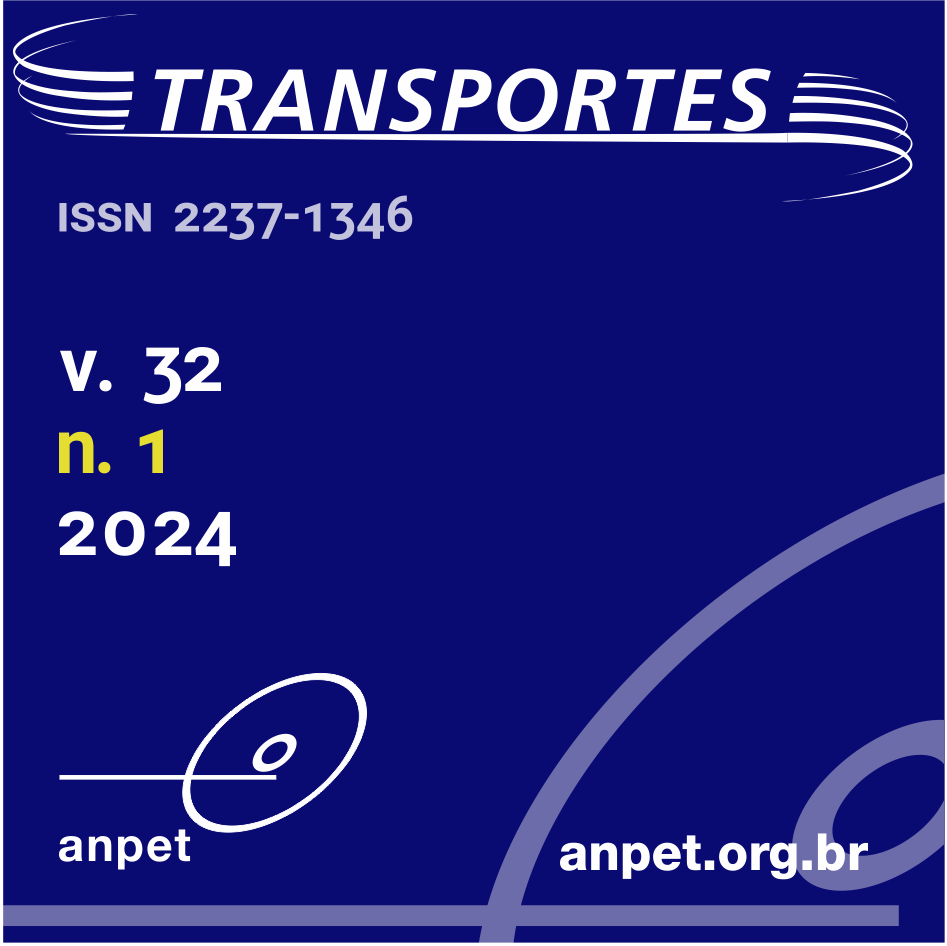Data-driven modeling of urban airspace availability for air mobility operations in the São Paulo Metropolitan Region
DOI:
https://doi.org/10.58922/transportes.v32i1.2896Palavras-chave:
Urban air mobility, Air traffic management, Airspace management, Machine learningResumo
Urban Air Mobility (UAM) is an emerging form of transportation that is expected to introduce novel flight networks into already busy and complex airspace surrounding major cities and metropolitan regions. This work provides a data-driven approach to modeling the urban airspace availability for emerging UAM operations toward supporting their safe and efficient integration. Using historical flight tracking data, clustering analysis is first performed to learn the current patterns of urban airspace use by conventional traffic and identify the airspace volumes that are least constrained and best accessible for UAM flights. Meteorological data is then incorporated into the machine learning framework to create a probabilistic model of the spatiotemporal distribution of conventional traffic flows. This model enables the prediction of active airport arrival/departure patterns and the resulting airspace availability for UAM given dynamic operational conditions. The data-based approach is demonstrated for the São Paulo metropolitan area, which is the largest in Brazil and a promising market for UAM. It allowed for a high-fidelity characterization of the São Paulo urban airspace use patterns as well as for accurate predictions of the available airspace for UAM, bringing novel insights and capabilities in support of dynamic and efficient urban airspace management.
Downloads
Downloads
Publicado
Como Citar
Edição
Seção
Licença
Copyright (c) 2024 João Vitor Turchetti, Mayara Condé Rocha Murça

Este trabalho está licenciado sob uma licença Creative Commons Attribution 4.0 International License.
Ao submeter um manuscrito para publicação neste periódico, todos os seus autores concordam, antecipada e irrestritamente, com os seguintes termos:
- Os autores mantém os direitos autorais e concedem à Transportes o direito de primeira publicação do manuscrito, sem nenhum ônus financeiro, e abrem mão de qualquer outra remuneração pela sua publicação pela ANPET.
- Ao ser publicado pela Transportes, o manuscrito fica automaticamente licenciado sob a Licença Creative Commons CC BY 4.0. Esta licença permite o seu compartilhamento com reconhecimento da autoria e da publicação inicial neste periódico.
- Os autores têm autorização para assumir contratos adicionais separadamente, para distribuição não exclusiva da versão do trabalho publicada neste periódico (por ex.: publicar em repositório institucional ou como capítulo de livro), com reconhecimento da publicação inicial na Transportes, desde que tal contrato não implique num endosso do conteúdo do manuscrito ou do novo veículo pela ANPET.
- Os autores têm permissão e são estimulados a publicar e distribuir seu manuscrito online (por ex.: em repositórios institucionais ou na sua página pessoal) depois de concluído o processo editorial. Como a Transportes é de acesso livre, os autores são estimulados a usar links para o DOI do artigo nesses casos.
- Os autores garantem ter obtido a devida autorização dos seus empregadores para a transferência dos direitos nos termos deste acordo, caso esses empregadores possuam algum direito autoral sobre o manuscrito. Além disso, os autores assumem toda e qualquer responsabilidade sobre possíveis infrações ao direito autoral desses empregadores, isentando a ANPET e a Transportes de toda e qualquer responsabilidade neste sentido.
- Os autores assumem toda responsabilidade sobre o conteúdo do manuscrito, incluindo as devidas e necessárias autorizações para divulgação de dados coletados e resultados obtidos, isentando a ANPET e a Transportes de toda e qualquer responsabilidade neste sentido.










